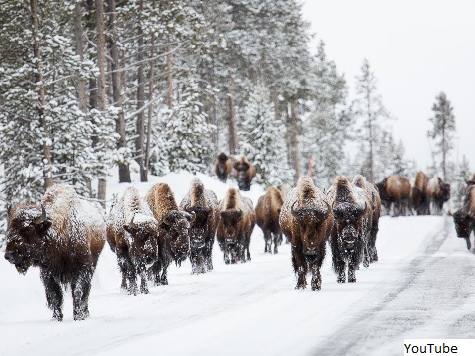The mass and rapid exiting of bison herds and other animals from Yellowstone National Park may be a foreshadowing that something very dramatic is happening. According to some, the animals may be detecting something vast and deadly that could be the Yellowstone supervolcano.
A 4.7 earthquake hit four miles north-northeast of the Norris Geyser Basin on March 30. The University of Utah Seismograph Stations termed it “a light earthquake.” It also said that it was part of a series of 25 quakes. The United States Geological Service’s Yellowstone Observatory claims that earthquake activity in and around Yellowstone is normal, because between 1,000 and 3,000 typically occur each year.
Geological experts have discovered that the supervolcano is far bigger than previously thought, about 2.5 times. “We’ve been working there for a long time, and we’ve always thought it would be bigger… but this finding is astounding,” said Bob Smith of the University of Utah. One theory posits that supervolcano eruptions may happen about every 700,000 years, and that the last one to hit was 1.3 million years ago.
The biggest eruption of the Yellowstone supervolcano happened around 2.1 million years ago. It left behind huge volcanic depressions called “calderas” and spread volcanic ash over large parts of North America, according to the U.S. Geological Service.
The USGS claims that, “If another large caldera-forming eruption were to occur at Yellowstone, its effects would be worldwide. Thick ash deposits would bury vast areas of the United States, and injection of huge volumes of volcanic gases into the atmosphere could drastically affect global climate.” The USGS also says the likelihood of this happening in the next few thousand years is “exceedingly low.”

COMMENTS
Please let us know if you're having issues with commenting.